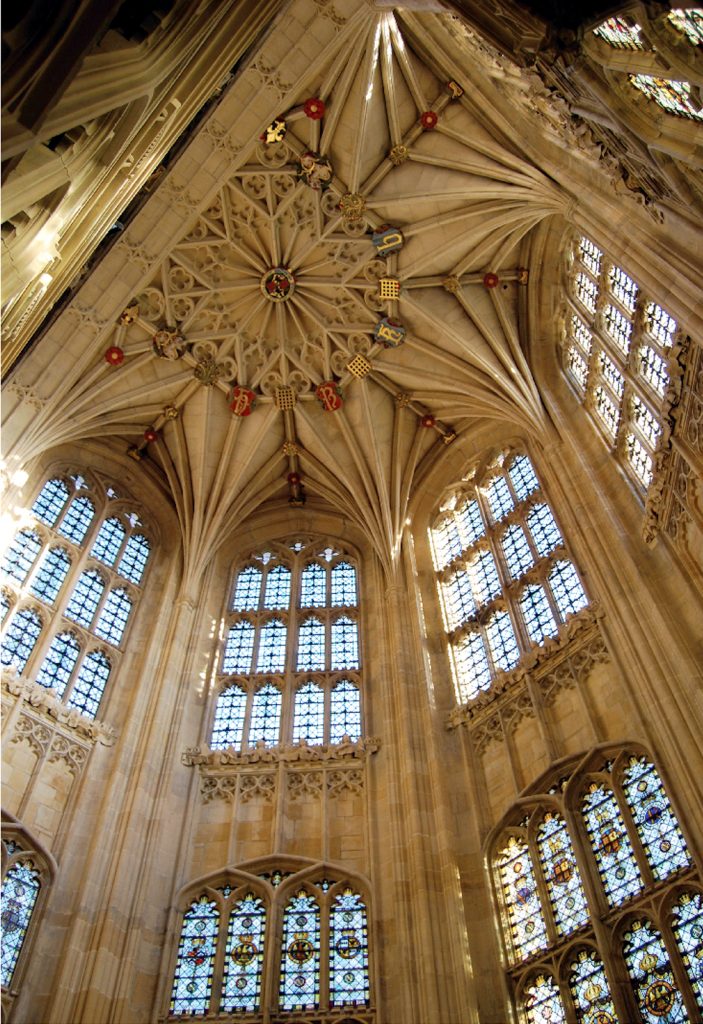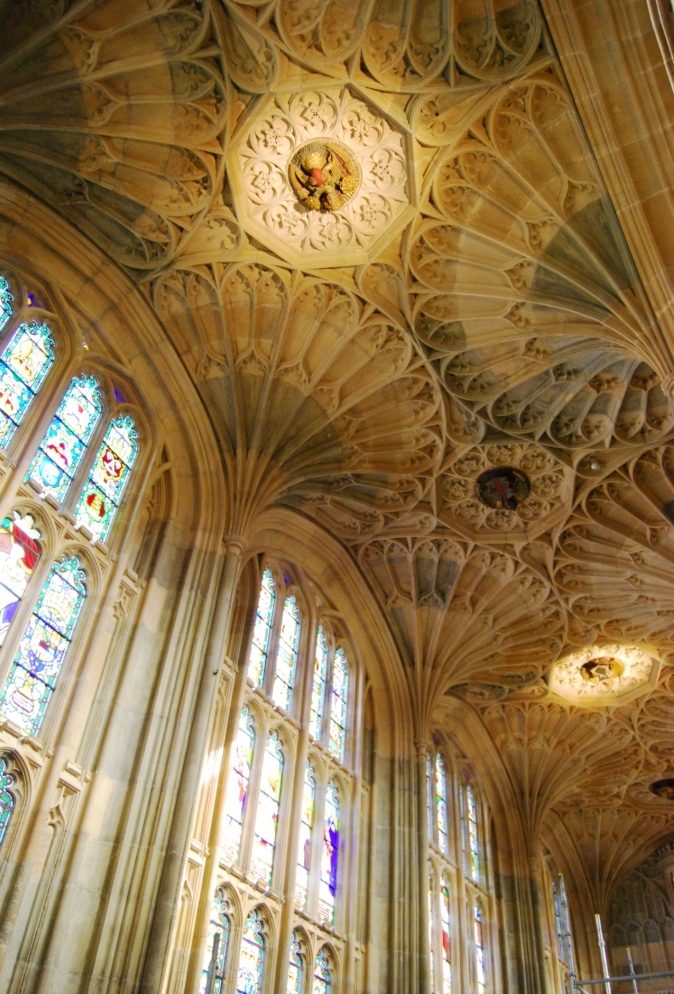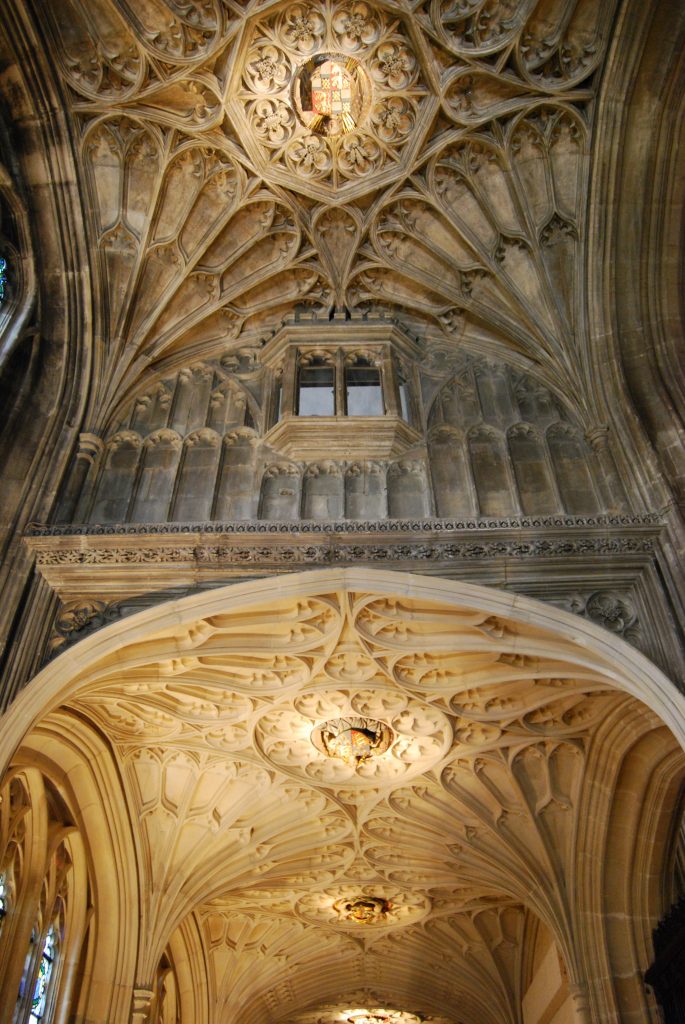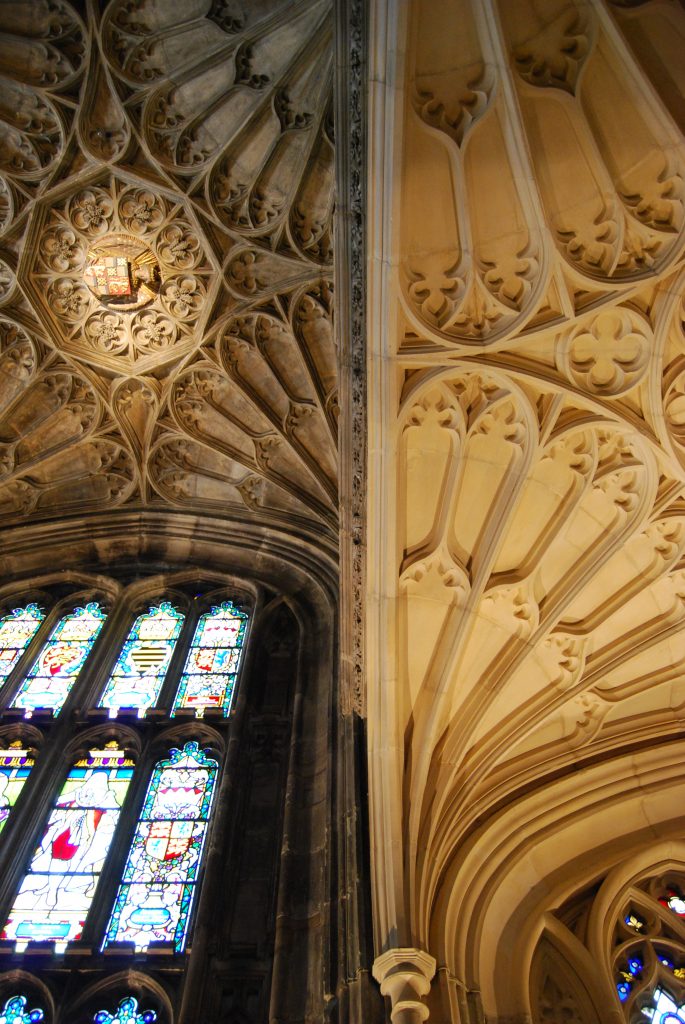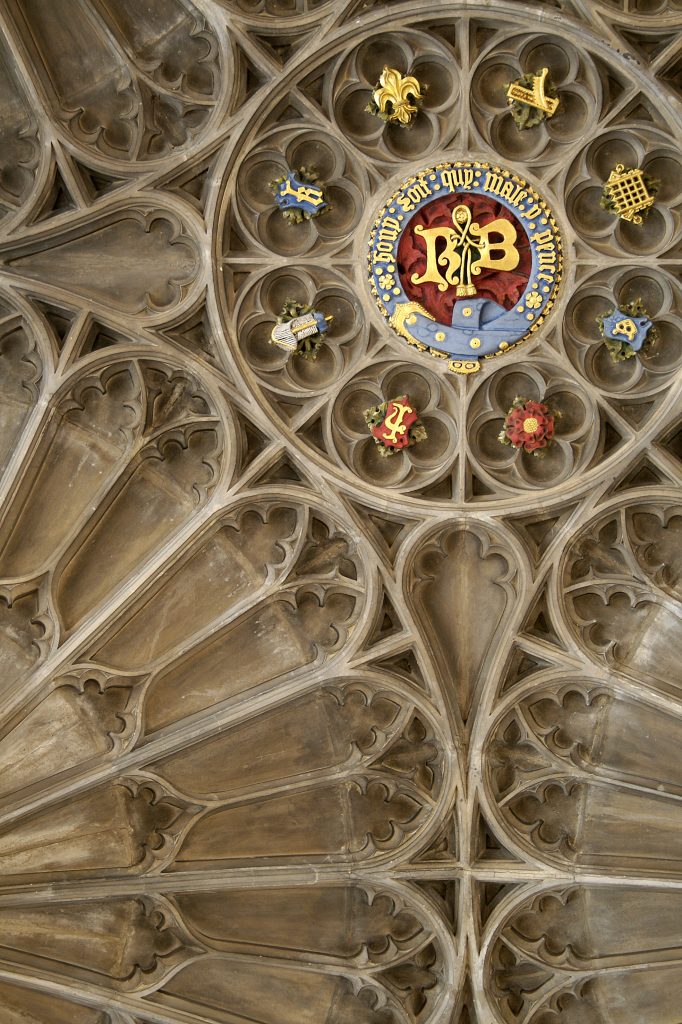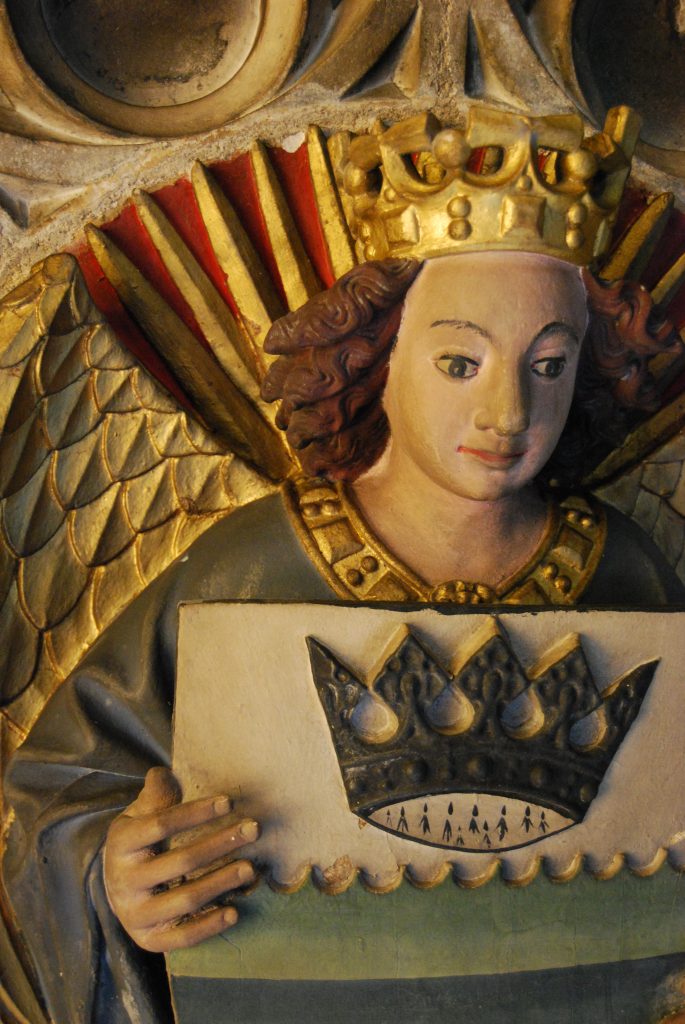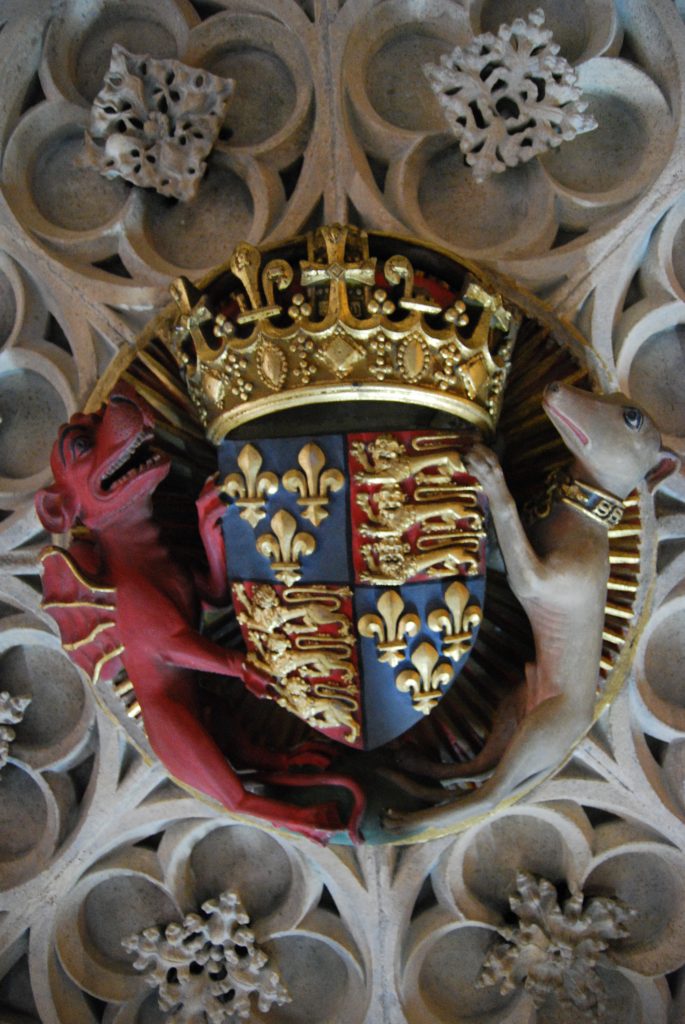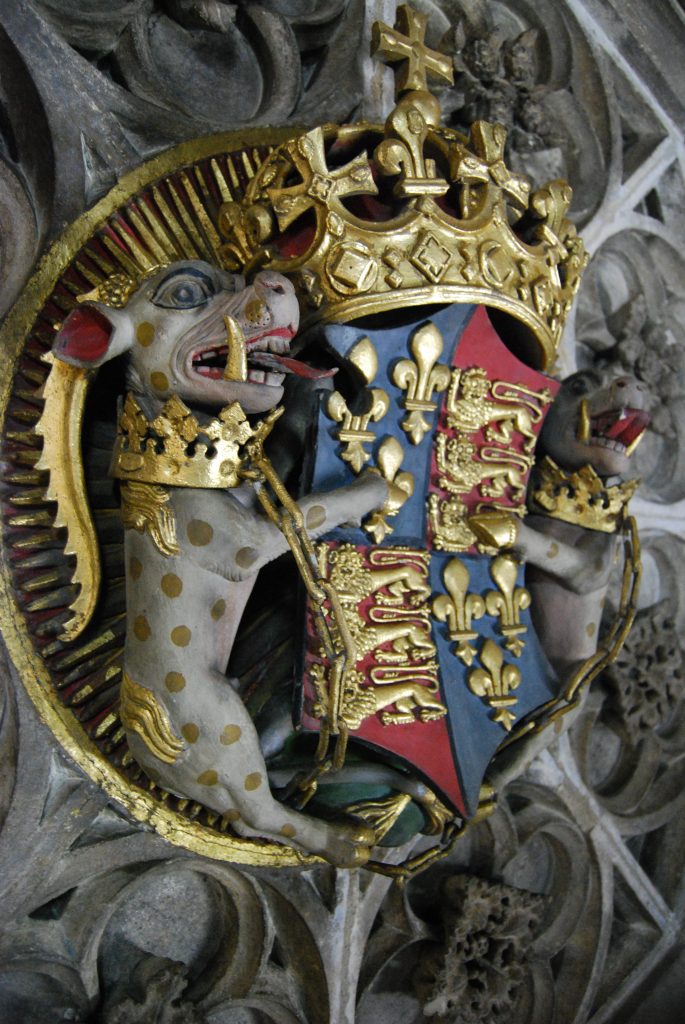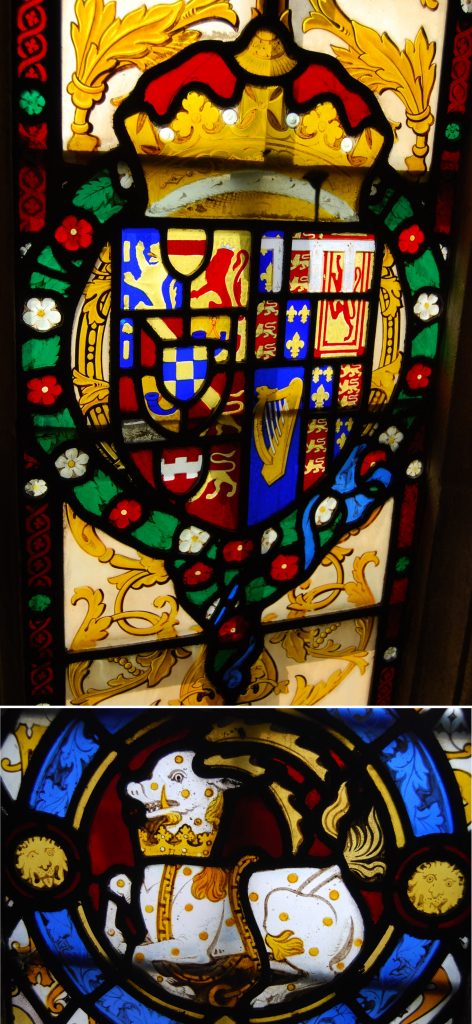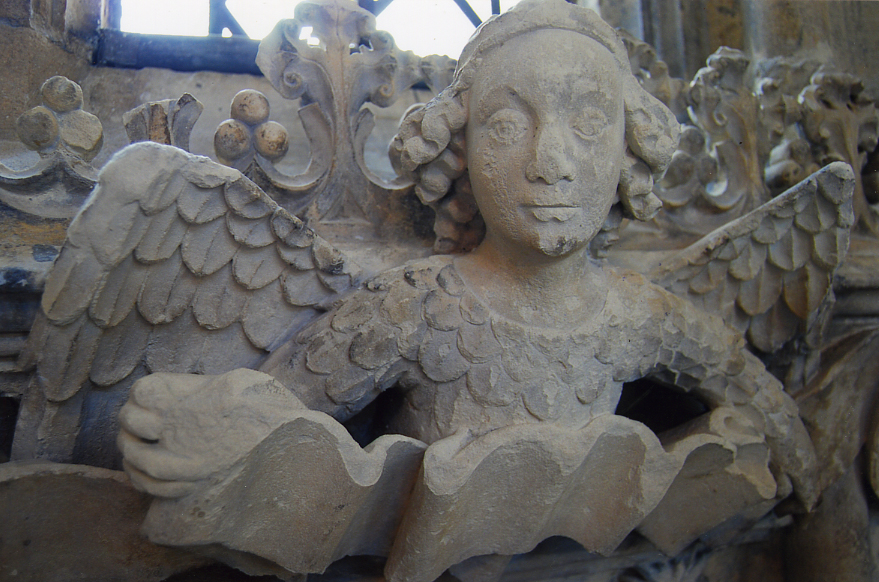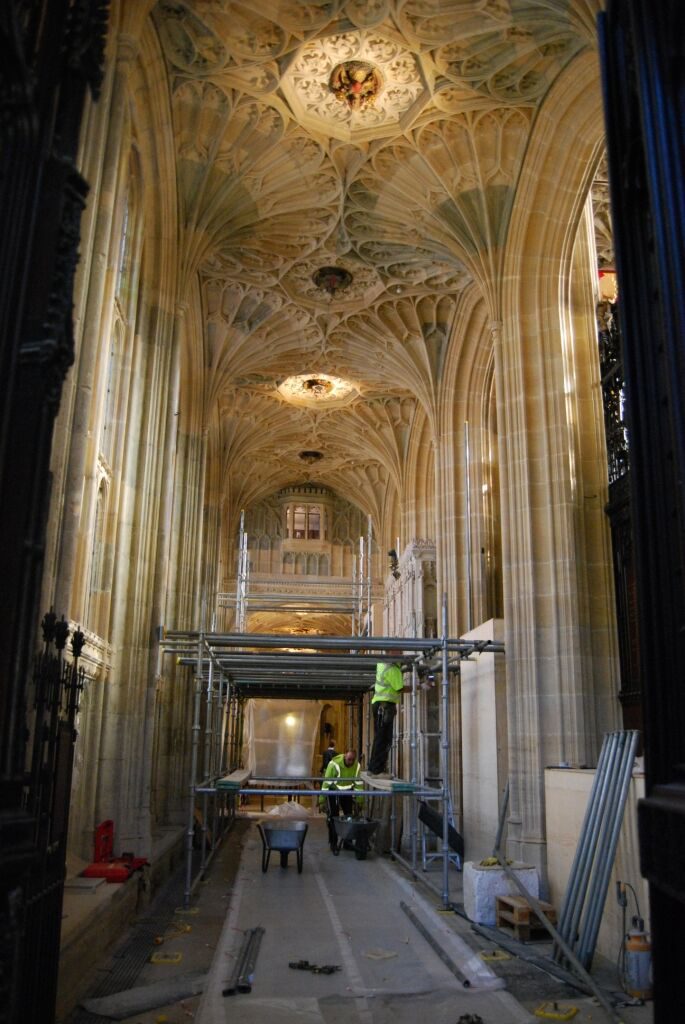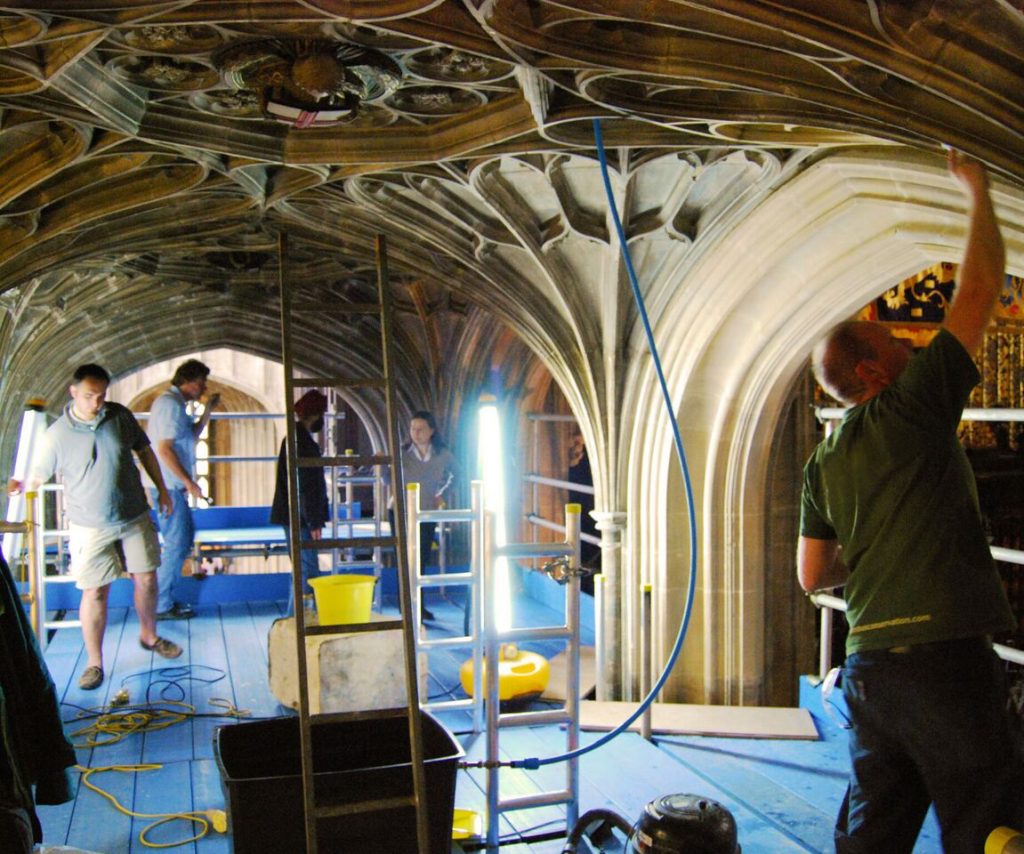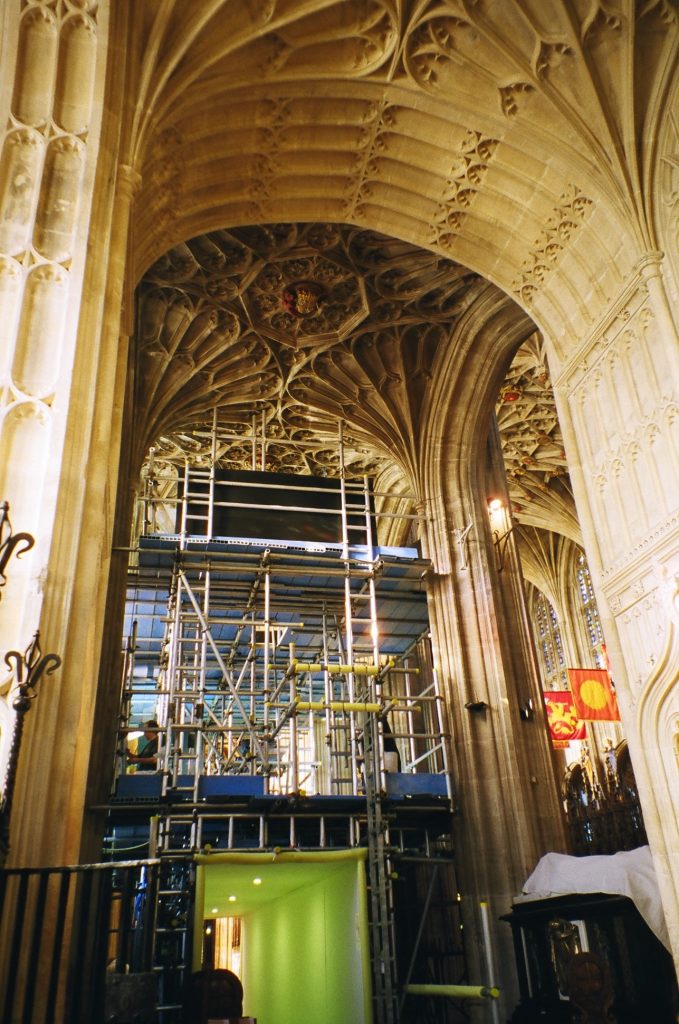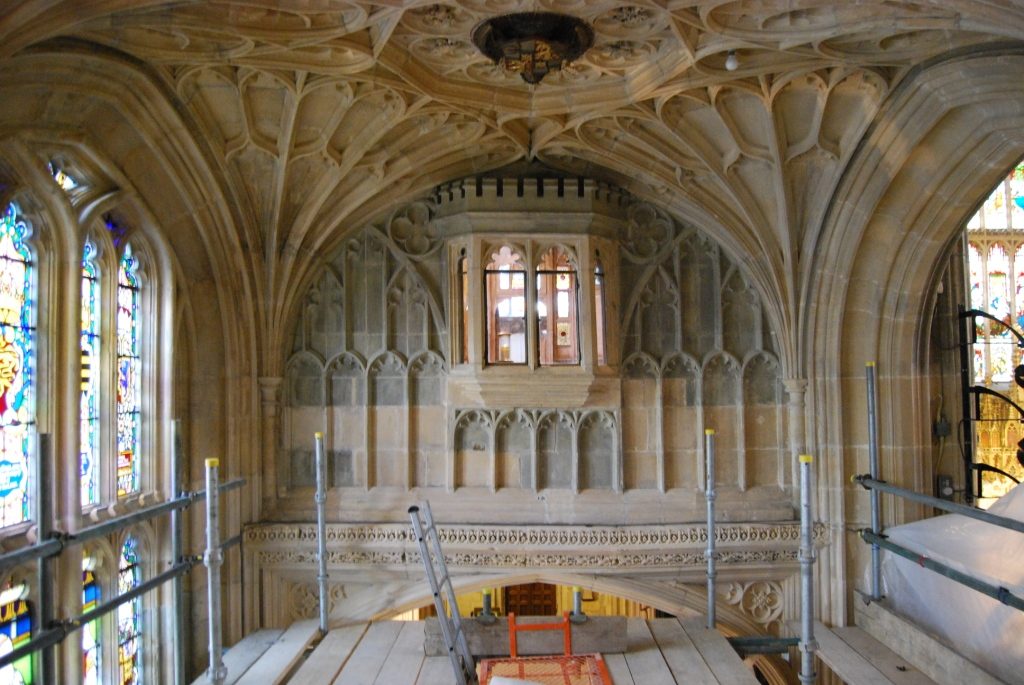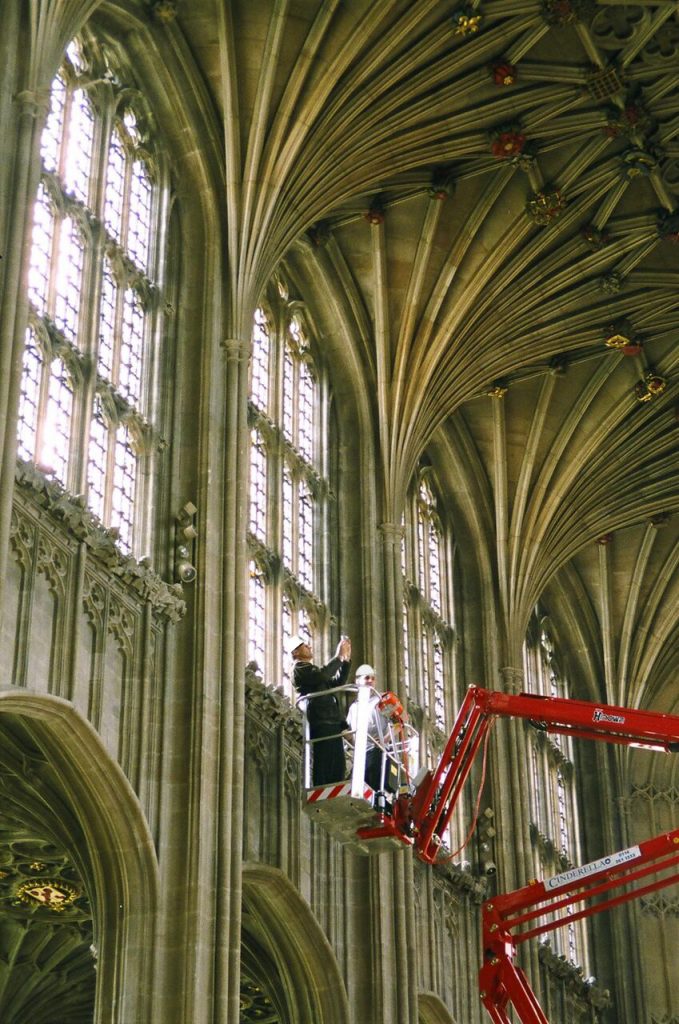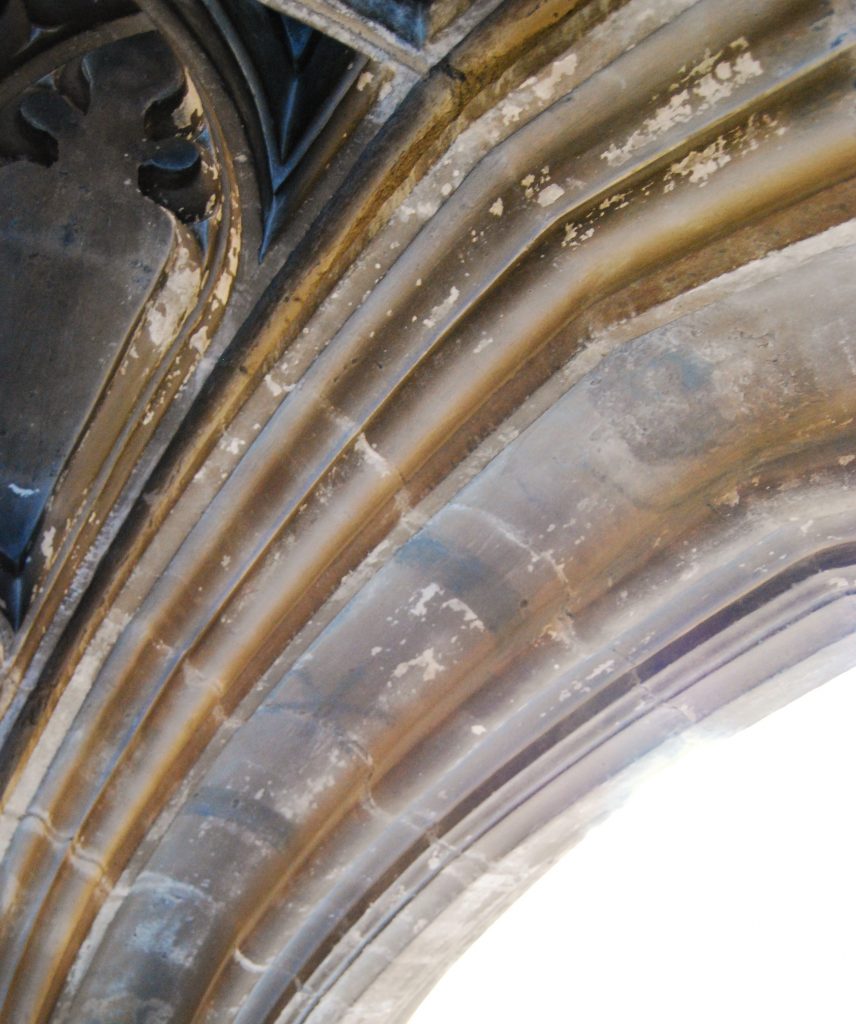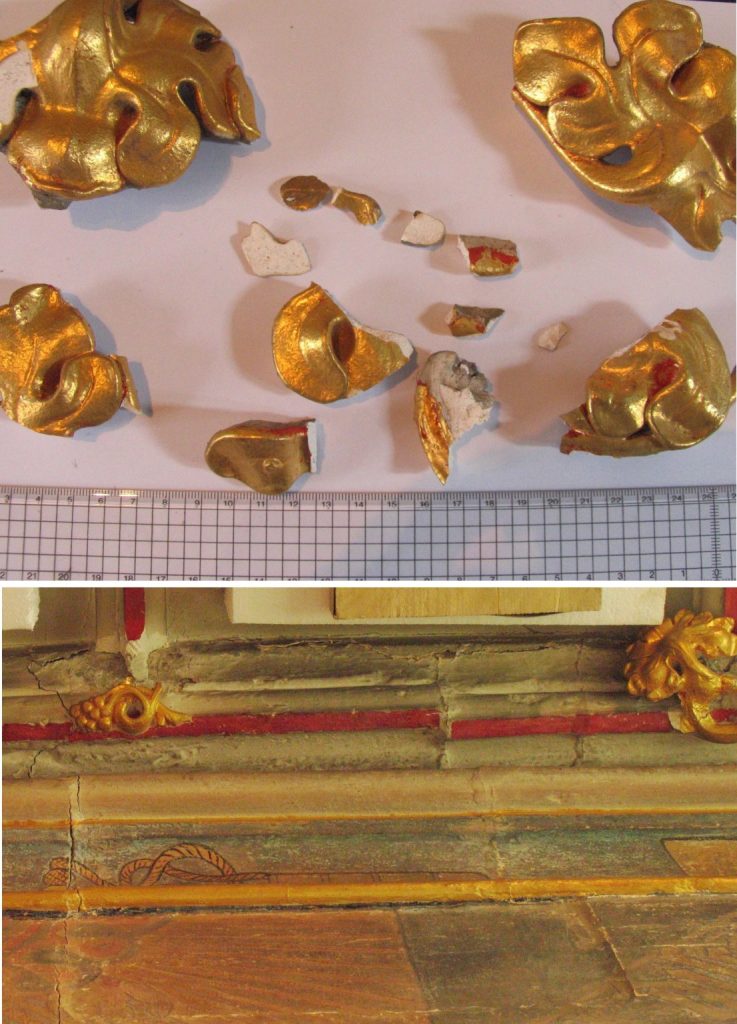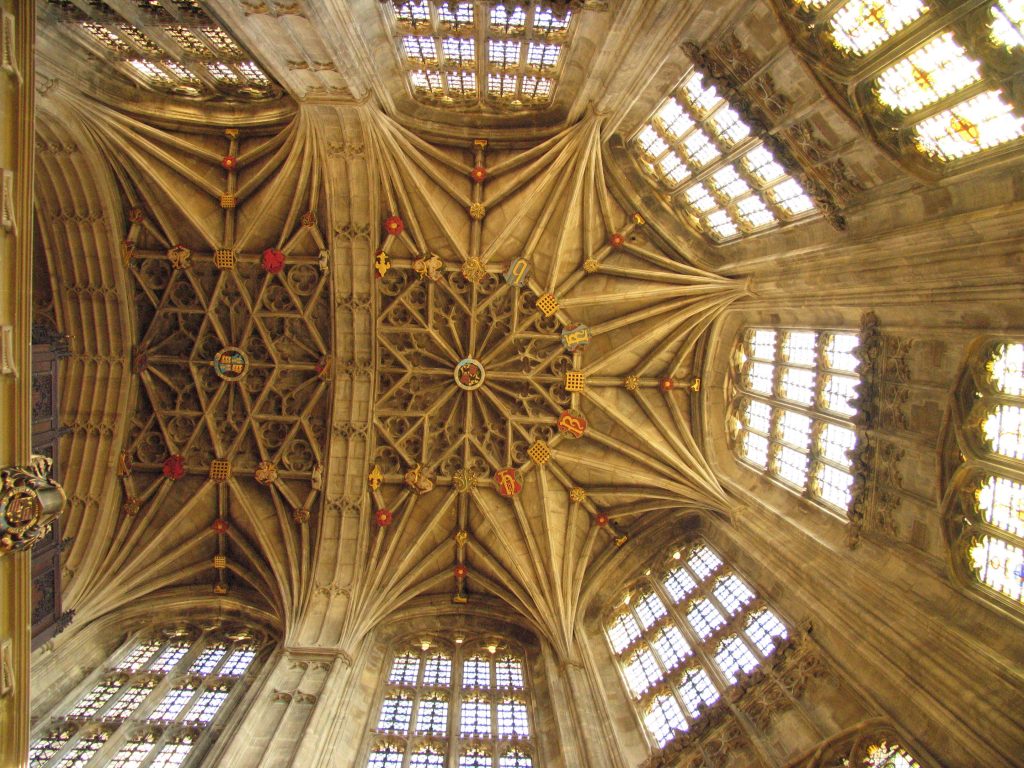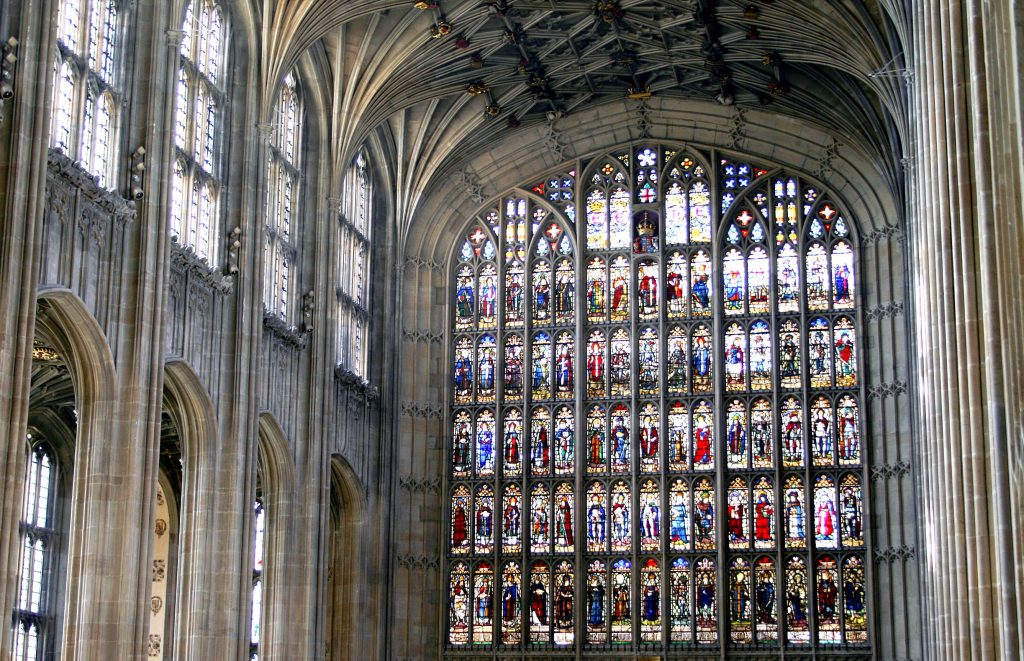Interior Conservation
The internal wall and ceiling vault surfaces of St George’s Chapel are visually grimy, and at lower level disrupted due to damp. Although the extraordinary uplifting internal architecture is magnificent, the visual experience, intended as an illustration of piety but also as a powerful heraldic celebration of the Sovereign and his Knight Companions is detracted-from by the grubbiness of the wall and vault surfaces. In response to this a phased programme of stonework cleaning and conservation has been commenced to step around the Chapel interior, and so far the Bray and Rutland Chantries, South and North Quire Aisles and Ambulatory have all been conserved to remarkable effect. Stone cleaning with de-ionized water and hand brushing with poulticing have removed heavy pollution deposits to stone facings and carved stonework including the beautiful 15th Century angel frieze in the Chantries, and the many heraldic bosses have been cleaned and conserved. Thomas Willement’s fabulous stained glass has been repaired and cleaned where accessible from the scaffolding. During the course of the works there were remarkable discoveries – the vestigial remains of painted heraldic decoration in the Henry VI and Oliver King bays of the south quire aisle; the prolific and breathtakingly exquisite 1470’s carved frieze and tiny figurative carving in the Ambulatory, including a late 15th Century Holy Trinity with an earliest-known depiction of the Holy Ghost. In the north quire aisle the surprising speed of construction of the North Quire Aisle was evidenced by the discovery of the masons’ marks of up to sixty stonemasons, and the use of differing stones in the North Quire Aisle vaults seemingly indicating shortages of Taynton or French Caen when needed. Subject to funding the programme of cleaning and conserving internal vaulting and walling stonework should progress into the nave aisles, the Beaufort Chantry, the main body of the nave, and the quire. The vestigial remains of an ‘azurite’ painted blue ceiling were discovered between the Bray Chantry ceiling vaults, perhaps a ‘starred heaven’ ceiling not unknown in mediaeval buildings but not previously known in the written archives of St George’s Chapel. In the angel-frieze every angel is individual and to an exceptionally high standard of carving albeit demonstrating differing hands. The Aisle walls carry a superb deep-relief-carved Caen stone frieze of grapevines with birds, beasts and little 15th Century figures hidden in the foliage. All the above a wonderful benefit of a very worthy programme of internal re-presentation of the magnificent Chapel interior.



